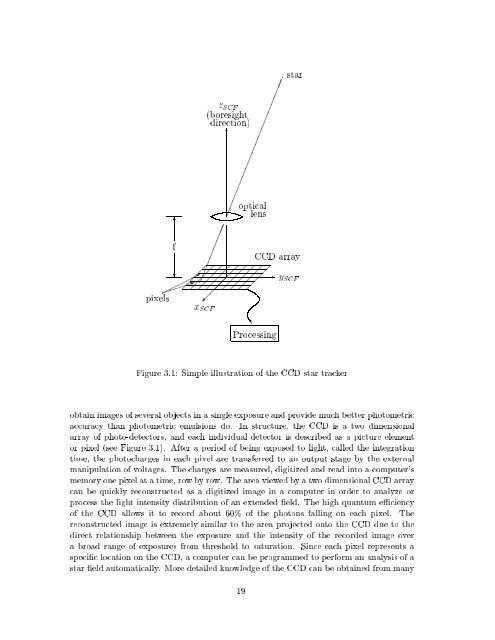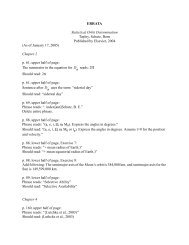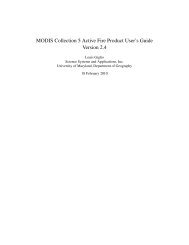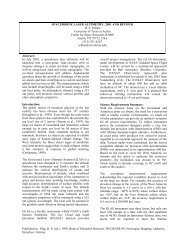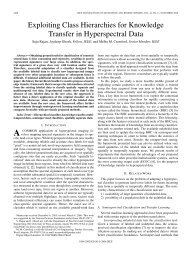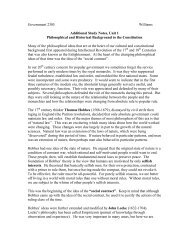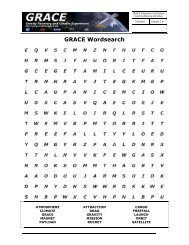(GLAS) PRECISION ATTITUDE DETERMINATION - Center for ...
(GLAS) PRECISION ATTITUDE DETERMINATION - Center for ...
(GLAS) PRECISION ATTITUDE DETERMINATION - Center for ...
Create successful ePaper yourself
Turn your PDF publications into a flip-book with our unique Google optimized e-Paper software.
ppstarz SCF(boresightdirection)66optical lenspixelsfCCD array?; ;; ; ;;; ;;; ;;; ;;; ;;; ;;; ;;; ;; * 1;x SCFUProcessing- ySCFFigure 3.1: Simple illustration of the CCD star trackerobtain images of several objects in a single exposure and provide much better photometricaccuracy than photometric emulsions do. In structure, the CCD is a two dimensionalarray of photo-detectors, and each individual detector is described as a picture elementor pixel (see Figure 3.1). After a period of being exposed to light, called the integrationtime, the photocharges in each pixel are transferred to an output stage by the externalmanipulation of voltages. The charges are measured, digitized and read into a computer'smemory one pixel at a time, row byrow. The area viewed by atwo dimensional CCD arraycan be quickly reconstructed as a digitized image in a computer in order to analyze orprocess the light intensity distribution of an extended eld. The high quantum eciencyof the CCD allows it to record about 60% of the photons falling on each pixel. Thereconstructed image is extremely similar to the area projected onto the CCD due to thedirect relationship between the exposure and the intensity of the recorded image overa broad range of exposures from threshold to saturation. Since each pixel represents aspecic location on the CCD, a computer can be programmed to per<strong>for</strong>m an analysis of astar eld automatically. More detailed knowledge of the CCD can be obtained from many19


